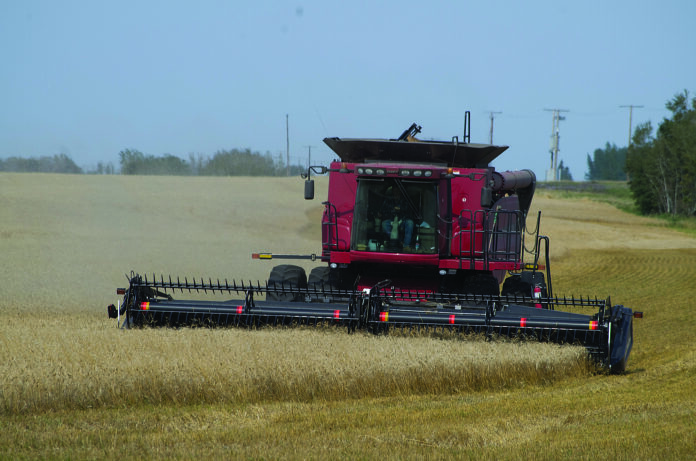Ministry of Agriculture, Submitted
Crop yield potential has decreased in many parts of the province due to the dry heat, and producers are hoping for more rain before harvest to finish up seed filling. Harvest has begun in the driest areas of the province.
Desiccating of pulses has begun in the southwest and west central regions and combining of these fields will commence quickly. Cereal crops that cannot be harvested due to dry conditions and grasshopper damage are being salvaged for livestock feed to support neighbouring livestock producers.
There were several storms throughout the province this past week. Some resulted in rainfall amounts up to 37 to 40 mm which will give crops some reprieve from the heat stress and encourage seed fill. Many of the driest areas of the province received trace amounts of rain throughout the week. Producers are hoping for substantial moisture following harvest as some areas in the province have now gone more than 30 days without precipitation.
Topsoil moisture continues to decrease and is rated as 15 per cent adequate, 48 per cent short and 37 per cent very short. Hay and pasture land topsoil moisture is rated as eight per cent adequate, 43 per cent short and 49 per cent very short.
Crop conditions have also decreased due to extreme heat, rating from very poor to good. The areas of the province where timely rain has fallen are showing higher crop conditions.
Haying operations are almost complete with five per cent standing, 13 per cent cut and 82 per cent baled or silage. Hay quality is rated as four per cent excellent, 66 per cent good, 29 per cent fair and one per cent poor. Livestock producers who have not received adequate rainfall this season are reporting water and feed concerns.
Strong winds, drought stress, hail, extreme heat, grasshoppers and gophers took their toll on some crops this past week. Many producers stopped applying pest control products. Producers are reminded to be safe during their harvest operations such as taking frequent breaks and to remember to use every precaution available for fire prevention as the extremely dry conditions increase the risk of combine and grass fires.
Northeastern Saskatchewan
Crops vary greatly across the region, some look great due to timely rains while others are in poor condition. More moisture is needed to fill pods and heads and producers are hoping for a some more rainshowers in the coming weeks. The heat has caused crops in the drier parts of the region to begin to rapidly dry down creating an earlier than normal harvest for some producers.
The hot dry week helped haying operations and livestock producers currently have 81 per cent of the hay baled or put into silage. An additional 12 per cent is cut and ready for baling. Hay quality is currently rated as 14 per cent excellent, 71 per cent good and 15 per cent fair. Cattle producers have indicated that without significant rain there will likely not be a second cut of hay.
Cropland topsoil moisture is rated as 25 per cent adequate, 67 per cent short and nine per cent very short. Hay and pasture land is rated as 16 per cent adequate, 69 per cent short, 15 per cent very short.
The majority of crops are in poor-to-good condition. Crops in the areas of the region that received rain look good, but as hot days continue and moisture becomes sparse, crops have experience yield reducing stress such as heat blasting of flower petals.
Most of the crop damage this past week was from heat, insects and the wind. Producers have not started harvesting but have begun to prep equipment to be ready for when their crop dries down in the coming weeks.
Northwestern Saskatchewan
Crops that received rain are managing to hold on, but crops that did not receive much needed rain are rapidly drying down. Some producers are noticing that pods and heads are not filling and without rain soon, the crops in the dry areas of the region will experience drops in their yield potential. Some report that if the heat continues, they will need a inch of rain a week to get their crop to harvest.
Haying has been progressing well in the region and livestock producers currently have 81 per cent of the hay baled or put into silage. An additional 12 per cent is cut and ready for baling. Hay quality is currently rated as 67 per cent good and 33 per cent fair. Livestock producers are hoping for a large precipitation event in order to make a second cut of hay in September.
Cropland topsoil moisture is rated as 32 per cent adequate, 53 per cent short and 16 per cent very short. Hay and pasture land is rated as 15 per cent adequate, 55 per cent short and 30 per cent very short.
Most of the crop damage this past week was due to heat stress, grasshoppers and drought. Producers are beginning to apply desiccants and get their harvest equipment ready.
Follow the 2023 Crop Report on Twitter at @SKAgriculture.


